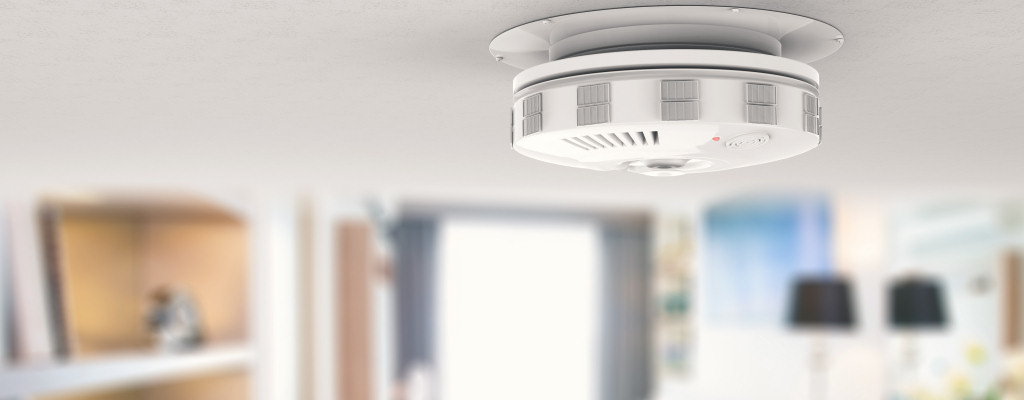We often hear questions and concerns from our customers about carbon monoxide leaks. Here are answers to your most frequently asked questions, to keep you informed, so you and your family stay safe!
What is carbon monoxide?
Carbon monoxide – or CO – is an odorless, colorless gas. In other words, it’s virtually undetectable without specialized equipment. It’s poisonous and can be fatal when inhaled. CO gas is created when carbon-containing substances are burned, and the carbon isn’t completely consumed. Burning gasoline, propane, oil, coal, wood, and other flammable materials can produce carbon monoxide.
How dangerous is carbon monoxide?
As we said above, carbon monoxide is poisonous, and it can kill you if you inhale it. When absorbed by your lungs, it enters your bloodstream and displaces oxygen. As a result, your heart and brain are deprived and begin to shut down, eventually ceasing function altogether.
CO ‘s deadliness depends on its concentration in the air, and the length of your exposure to it. If there’s a significant amount in the air, you’ll suffocate and pass out almost instantly.
Residential CO leaks are usually smaller, causing more subtle and gradual symptoms. You may not realize you have a carbon monoxide leak, often mistaking the symptoms for another illness, like influenza – until your health is in serious jeopardy.
The Center for Disease Control (CDC) says around 400 people die from CO poisoning each year. Another 20,000 are treated in the emergency room, and 4,000 must recover during a hospital stay.
How do I recognize the symptoms of CO poisoning?
Symptoms become more severe and apparent with higher exposure. As we mentioned, milder symptoms tend to be mistaken for the flu. Acute symptoms are much more noticeable. Unfortunately, during acute exposure, you’ll only have a very short time between recognition and loss of consciousness – leaving you little time to act, and potentially physically incapable of doing so.
What CO inhalation symptoms I should watch out for?
Symptoms of CO poisoning include:
• Dizziness
• Headache
• Difficulty breathing
• Nausea and vomiting
• Confusion
• Chest pains
• Fainting
• Blurred vision
It’s essential to note that children and the elderly are more vulnerable to CO poisoning. Being asleep or having a high blood-alcohol level means you may not notice the symptoms and puts you at much greater risk.
How much carbon monoxide is dangerous?
Let’s be clear here: Any amount of carbon monoxide in the air you breathe is dangerous. At one to 70 parts-per-million (ppm), symptoms will not be evident in adults, but likely will be in children and older adults. Over 70 ppm, symptoms become more apparent. 150-200 ppm of airborne carbon monoxide can cause poor muscle coordination, delirium, fainting, and death.
How do I protect my home and family from CO leaks?
You must be proactive in preventing CO leaks so that you can protect yourself, your family, and your pets. Given the risks associated with carbon monoxide, you’re better safe than sorry.
What should I do about carbon monoxide?
Make sure you carefully read the instruction manuals for all gas stoves, water heaters, furnaces, etc. – any appliance that uses combustion. Don’t attempt to install, clean, or repair them on your own – have a professional do the job correctly.
Schedule annual maintenance inspections and tune-ups for your appliances. Our certified experts will check for any blockages, punctures, sediment, or disconnected lines.
Never run a gas-powered appliance in an enclosed space. This can cause airborne CO levels to build up quickly, creating a hazardous situation.
Don’t leave stovetop burners on when not in use, and never use them to heat your home.
Never leave your car, truck, or SUV running in the garage, even with the door open. While your car’s catalytic converter is designed to reduce CO emissions, it doesn’t eliminate them. Carbon monoxide and other toxic emissions will accumulate rapidly.
Install a CO detector and place it near your bedrooms. Your family is the most vulnerable to carbon monoxide poisoning when they’re asleep. That said, installing a CO detector isn’t a substitute for taking preventative steps, but it is a smart safety precaution.
We want you, the good people of northeast Ohio, to stay safe. That’s why we offer repair, inspection and maintenance for your carbon-burning gas furnace! Our techs come to your home with the specialized equipment necessary to detect the presence of a carbon monoxide gas leak. We also offer carbon monoxide detector installation. To learn more, call us!


Comments are closed